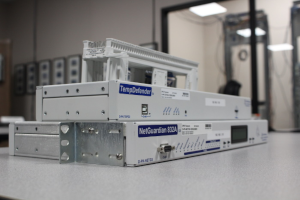Check out our White Paper Series!
A complete library of helpful advice and survival guides for every aspect of system monitoring and control.
1-800-693-0351
Have a specific question? Ask our team of expert engineers and get a specific answer!
Sign up for the next DPS Factory Training!

Whether you're new to our equipment or you've used it for years, DPS factory training is the best way to get more from your monitoring.
Reserve Your Seat TodayYou (or your company) have made the proverbial first step in protecting your revenue-generating equipment by deciding to buy a remote monitoring alarm.
Great! However, just knowing you want a vehicle won't give you enough direction when you walk into a car dealership.
First, we need to see what needs to be remotely monitored at your company's site.
Let's examine, for example, a remote site with a transmitter tower. The site in question also has equipment typically seen at other sites: a battery power source, a backup generator, a propane fuel source, and a power switch. Now let's also say the site has security facilities, such as an alarm system and an electric security fence. If your facility is in a specific climate, you might consider other systems, such as humidifiers, or coolant systems for warmer locales.

Based off our assessment of the remote site, we have seven (7) different pieces of equipment that the hypothetical company would like to monitor. Depending on your company's asset protection priorities, this will vary substantially. Remember to consider any critical systems that your company needs to keep tabs on- you're the professional they hired for a reason.
Now that we've identified the site's critical utilities, can we move forward with picking an RTU? It's not as simple as a 1:1 equipment to input ratio, unfortunately.
We still need to take a look at each utility to determine the connection types and if additional requirements are needed. Fortunately this is
How many RTU inputs does my site require?
The transmitter tower itself in this example has a transmitter receiver- which is pretty vital to the operation of the site as one could imagine- and beacon lights used to prevent airborne accidents. We now have two discrete connections to monitor.
We would also need to monitor the fuel sensor on the propane fuel source to track the amount of fuel in reserve incase the battery plant fail and backups are needed. This can be done with one analog connection. The battery plant will also require an analog connection. Now if either dies, we can monitor how much fuel we have as we make plans for a tech to visit the site.
The remote site's power switch requires four discrete inputs into the RTU, and a discrete input is needed each for the security alarm and electric gate. Finally, we need a control for the generator to be able to toggle it remotely.

Now that we have the ability to capture the alarm data collected at your remote sites, it needs to be transmitted over a data network to your alarm presentation master at your NOC. Getting the data from the site to you can be done through Ethernet LAN/WAN, dial-up modem, dedicated circuit, overhead channel, etc.
Typically when specifying your alarm data transport specs, you want to implement transports already embedded in your network. Implementing new transports can increase your budget and downtime until the system is usable. Also, a backup alarm data transport setup is always good practice as a contingency in case the primary fails. Staking alarm visibility on one mode of transport can be a recipe for disaster as no one transport method is 100% reliable.
Since our example site has cell coverage and LAN, we'll choose an RTU with a SMS and LAN transport method. Again, we'll have the primary notification through SMS to get our time sensitive alarm data to us, but if that ever fails for any reason, the LAN transport will be available to transmit the data.
Finally, we need to consider expansion capabilities for extended use. It's not unusual for RTU's to continue working flawlessly for upwards of 15 years. In that time, your site will change in complexity and size; your alarm system should be able to compensate for said growth. Since alarm monitoring will be a long-term investment, be sure to account for extra discretes, analogs, and display that might be needed in the future, rather than the exact current requirements.
So to recap, our fictitious remote site will need the following. Keep in mind these are the minimum specs; be sure to allot for more inputs for future site expansions!
Also, we've decided to utilize SMS notifications as our transmitter tower has cell coverage. Our secondary transport will be through LAN.
Now we simply need to enter in our tallies in our Perfect-fit RTU finder and find an RTU that is ideal for our site!
Upon review of the matching remote alarms, our example remote site would best utilize the NetGuardian 216SMS